Related Research Articles

Richard Bachman is a pen name of American horror fiction author Stephen King, first adopted in 1977 for the novel Rage. King hid the link between himself and Bachman, until allowing for his identification in 1985. He collected the first four Bachman novels into The Bachman Books. Rage became controversial for being about a school shooting and was allowed to go out of print after the 1997 Heath High School shooting. Three more novels were published under the Bachman name.

Alice Malsenior Tallulah-Kate Walker is an American novelist, short story writer, poet, and social activist. In 1982, she became the first African American woman to win the Pulitzer Prize for Fiction, which she was awarded for her novel The Color Purple. Over the span of her career, Walker has published seventeen novels and short story collections, twelve non-fiction works, and collections of essays and poetry.

The Man in the High Castle (1962) is an alternative history novel by Philip K. Dick wherein the Axis Powers won World War II. The story occurs in 1962, fifteen years after the end of the war in 1947, and depicts the life of several characters living under Imperial Japan or Nazi Germany as they rule the partitioned United States. The titular character is the mysterious author of a novel-within-the-novel entitled The Grasshopper Lies Heavy, a subversive alternative history of the war in which the Allied Powers are victorious.

James Arthur Baldwin was an American writer and civil rights activist. He garnered acclaim for his work across several forms, including essays, novels, plays, and poems. His first novel, Go Tell It on the Mountain, was published in 1953; in 2005, Time magazine included the novel on its list of the 100 best English-language novels released since the year of the Time's first publication in 1923. His first essay collection, Notes of a Native Son, was published in 1955.
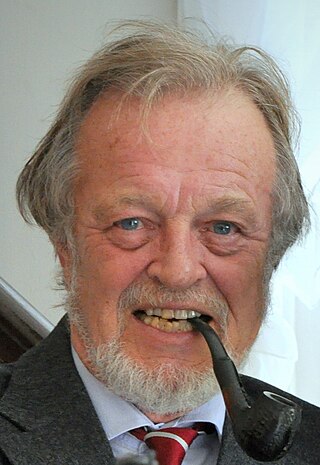
Bernard Cornwell is an English-American author of historical novels and a history of the Waterloo Campaign. He is best known for his novels about Napoleonic Wars rifleman Richard Sharpe. He has also written The Saxon Stories, a series of 13 novels about the making of England.

Leon Marcus Uris was an American author of historical fiction who wrote many bestselling books including Exodus and Trinity.
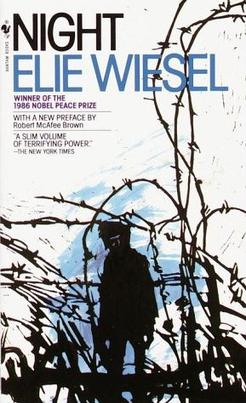
Night is a 1960 memoir by Elie Wiesel based on his Holocaust experiences with his father in the Nazi German concentration camps at Auschwitz and Buchenwald in 1944–1945, toward the end of the Second World War in Europe. In just over 100 pages of sparse and fragmented narrative, Wiesel writes about his loss of faith and increasing disgust with humanity, recounting his experiences from the Nazi-established ghettos in his hometown of Sighet, Romania, to his migration through multiple concentration camps. The typical parent–child relationship is inverted as his father dwindled in the camps to a helpless state while Wiesel himself became his teenaged caregiver. His father died in January 1945, taken to the crematory after deteriorating from dysentery and a beating while Wiesel lay silently on the bunk above him for fear of being beaten too. The memoir ends shortly after the United States Army liberated Buchenwald in April 1945.
ODESSA is an American codename coined in 1946 to cover Nazi underground escape-plans made at the end of World War II by a group of SS officers with the aim of facilitating secret escape routes, and any directly ensuing arrangements. The concept of the existence of an actual ODESSA organisation has circulated widely in fictional spy novels and movies, including Frederick Forsyth's best-selling 1972 thriller The Odessa File. The escape-routes have become known as "ratlines". Known goals of elements within the SS included allowing SS members to escape to Argentina or to the Middle East under false passports.

Exodus is a historical novel by American novelist Leon Uris about the founding of the State of Israel beginning with a compressed retelling of the voyages of the 1947 immigration ship Exodus and describing the histories of the various main characters and the ties of their personal lives to the birth of the new Jewish state.

Randall Flagg is a fictional character created by American author Stephen King, who has appeared in at least nine of his novels. Described as "an accomplished sorcerer and a devoted servant of the Outer Dark", he has supernatural abilities involving necromancy, prophecy, and influence over animal and human behavior. His goals typically center on bringing down civilizations through destruction and conflict. He has a variety of names, usually with the initial letters "R. F." but with occasional exceptions, such as Walter o'Dim and Marten Broadcloak in The Dark Tower series.
The Holocaust has been a prominent subject of art and literature throughout the second half of the twentieth century. There is a wide range of ways–including dance, film, literature, music, and television–in which the Holocaust has been represented in the arts and popular culture.

The Princess Bride: S. Morgenstern's Classic Tale of True Love and High Adventure, The "Good Parts" Version is a 1973 fantasy romance novel by American writer William Goldman. The book combines elements of comedy, adventure, fantasy, drama, romance, and fairy tale. It is presented as an abridgment of a longer work by the fictional S. Morgenstern, and Goldman's "commentary" asides are constant throughout. It was originally published in the United States by Harcourt Brace, then later by Random House, while in the United Kingdom it was later published by Bloomsbury.

Norsefire is the fictional white supremacist and neo-fascist political party ruling the United Kingdom in Alan Moore and David Lloyd's V for Vendetta comic book/graphic novel series, its 2005 film adaptation, and the 2019 television series Pennyworth.

John Alfred Williams was an African American author, journalist, and academic. His novel The Man Who Cried I Am was a bestseller in 1967. Also a poet, he won an American Book Award for his 1998 collection Safari West.

Markus Zusak is an Australian writer. He is best known for The Book Thief and The Messenger, two novels that became international bestsellers. He won the Margaret A. Edwards Award in 2014.

What Is the What: The Autobiography of Valentino Achak Deng is a 2006 novel written by Dave Eggers. It is based on the life of Valentino Achak Deng, a Sudanese child refugee who immigrated to the United States under the Lost Boys of Sudan program. It was a finalist for the National Book Award.
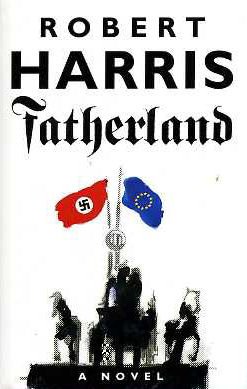
Fatherland is a 1992 alternative history detective novel by English writer and journalist Robert Harris. Set in a universe in which Nazi Germany won World War II, the story's protagonist is an officer of the Kripo, the criminal police, who is investigating the murder of a Nazi government official who participated at the Wannsee Conference. A plot is thus discovered to eliminate all of those who attended the conference, to help improve German relations with the United States.
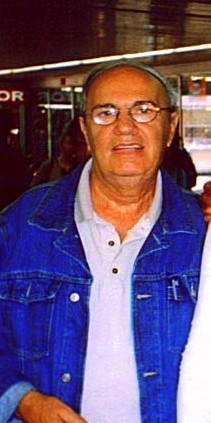
Herman A. Rosenblat was a Polish-born American author, known for writing a fictitious Holocaust memoir titled Angel at the Fence, purporting to tell the true story of a girl who passed him food through the barbed-wire fence at the Schlieben sub-camp of the Buchenwald concentration camp in World War II. The book was planned to be published in 2009 by Berkley Books, but was cancelled after it turned out that many elements of his memoir were fabricated and some were contrary to verifiable historical facts. Rosenblat later admitted to lying on purpose with the intention of bringing joy.
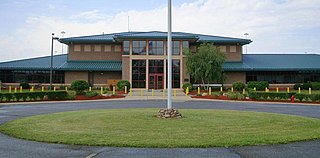
The Federal Correctional Complex, Allenwood is a federal prison complex for male inmates in Pennsylvania, United States. It is operated by the Federal Bureau of Prisons, a division of the United States Department of Justice.
The Man Who Cried I Am, first published in 1967 by Little, Brown and Company, is the fourth novel by the American author John A. Williams. The novel tells the story of Max Reddick, a black novelist and journalist, who looks back on his private and professional life and learns of a secret and genocidal plan made by the U.S. government.
References
- ↑ Campbell, James (September 9, 2004). "Black American in Paris". The Nation . Archived from the original on 2009-02-12. Retrieved 2020-02-22.
- 1 2 Boyd, Herbert. "The man and the plan: conspiracy theories and paranoia in our culture", Black Issues Book Review, March-April 2002.
- ↑ "Two Celebrated Authors saying Blacks facing genocide in the United States". Jet Magazine. 14 October 1971. Retrieved 3 August 2016.